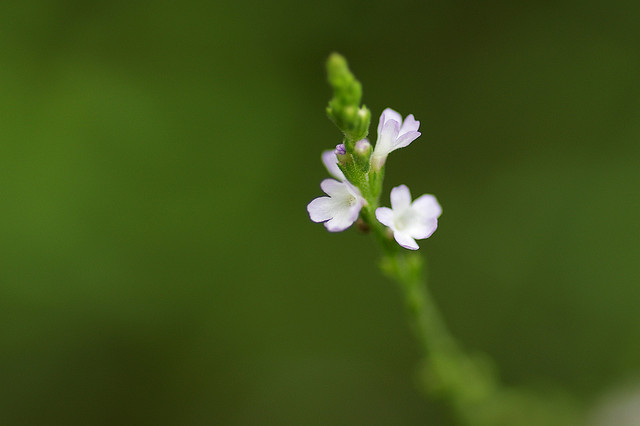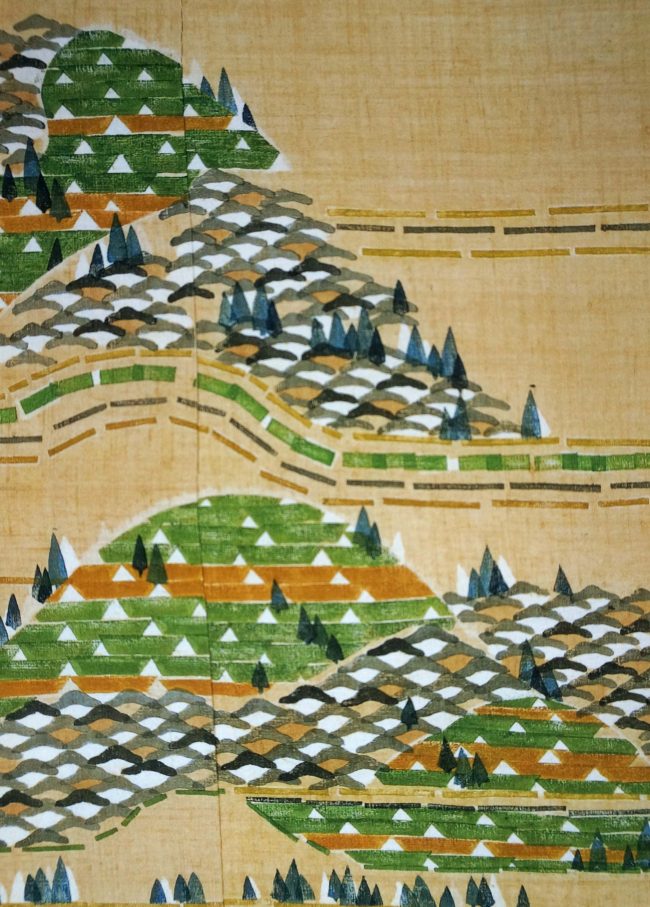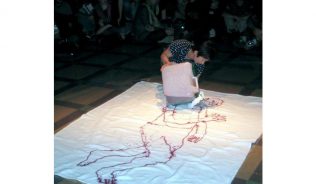Stories around purple
Women in a reddish purple kimono. Painted by Utamaro in the 18th century
Collection of Musée Guimet (http://www.guimet.fr/fr/)
Purple is an interesting color with lots of stories around it: in ancient Rome it was a royal color. Royal purple was dyed with fluid secreted by sea snails. Since tens of thousands of sea snails of a certain species were needed to dye just one robe, the robes were only for those with power. In Japan purple was also a royal color dyed with the root of a plant, murasaki (lithospermum erythrorhizon). In Japanese murasaki came to mean purple. It took a very long time and lots of labor to dye deep purple with the plant. Only people in important positions could wear purple garments.

(Murasaki roots dye purple, but its flowers are white)
Toward the end of the Edo era (1603-1868), growing murasaki became popular. Wearing purple became fashionable among rich people outside of aristocracy. Dyeing studios that dyed purple exclusively began opening. Bluish purple (violet) was a fashionable color for men and young women. Reddish purple was appropriate for elder women. The plant murasaki is now an endangered species and increasingly rare in Japan. There are some studios that still dye kimonos with murasaki. But the natural dyes that are used now for purple are usually safflower (red) and indigo (blue).
Utamaro, a popular Japanese painter in the Edo era, painted lots of women wearing various purple kimonos. The colors of his original paintings are conserved very well in the Boston Museum and we still can see them. Thanks to the American collectors (the Spaulding brothers and Frank Lloyd Wright), who bought and donated 382 Utamaro paintings, it was possible to analyze how those purples were made. Those purples were made with safflower (red) and dayflower (light blue). Since the light blue liquid taken from dayflower decays with moisture, Japanese art lovers and researchers appreciate the fact that American collectors and Boston Museum conserved the Utamaro paintings so well. If the American collectors hadn’t taken them to Boston, those original colors would have decayed over time and we wouldn’t be able to see the purples in Utamaro paintings from more than two hundred years ago.
photo credit: titanium22 via photopin cc

Japanese woodblock print dyeing master will come and teach on Vancouver Island in September 2017
Tetsuo Koyama, who visited the Cowichan Valley, Vancouver Island, BC three years ago will be back in September 2017 to teach advanced workshops. ...




Leave a Reply